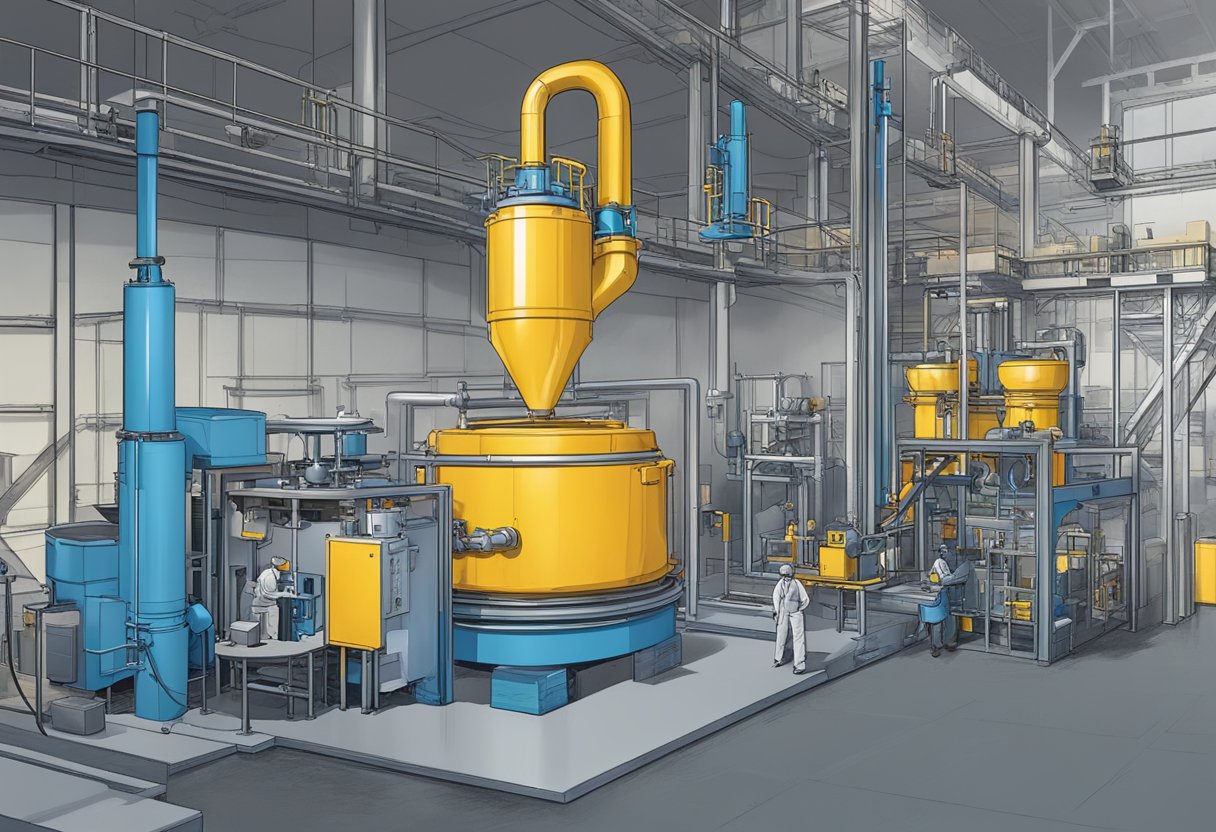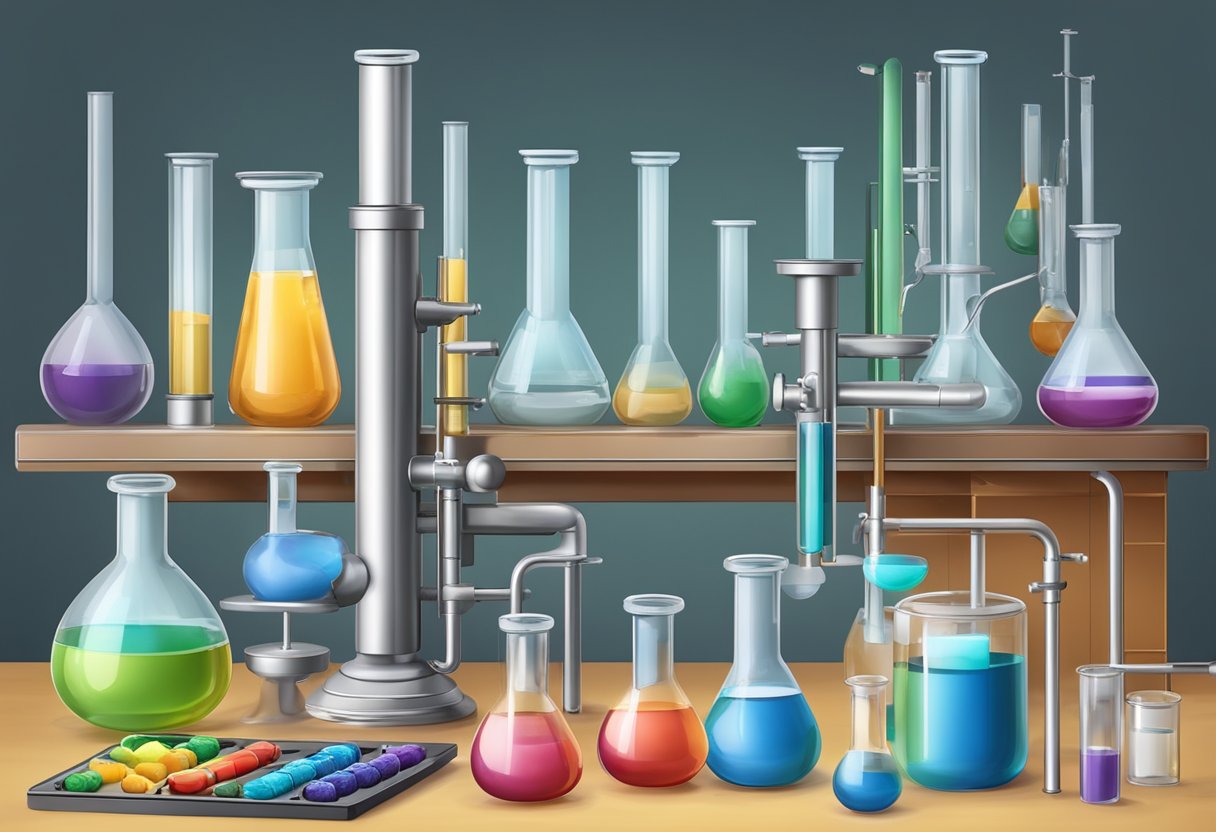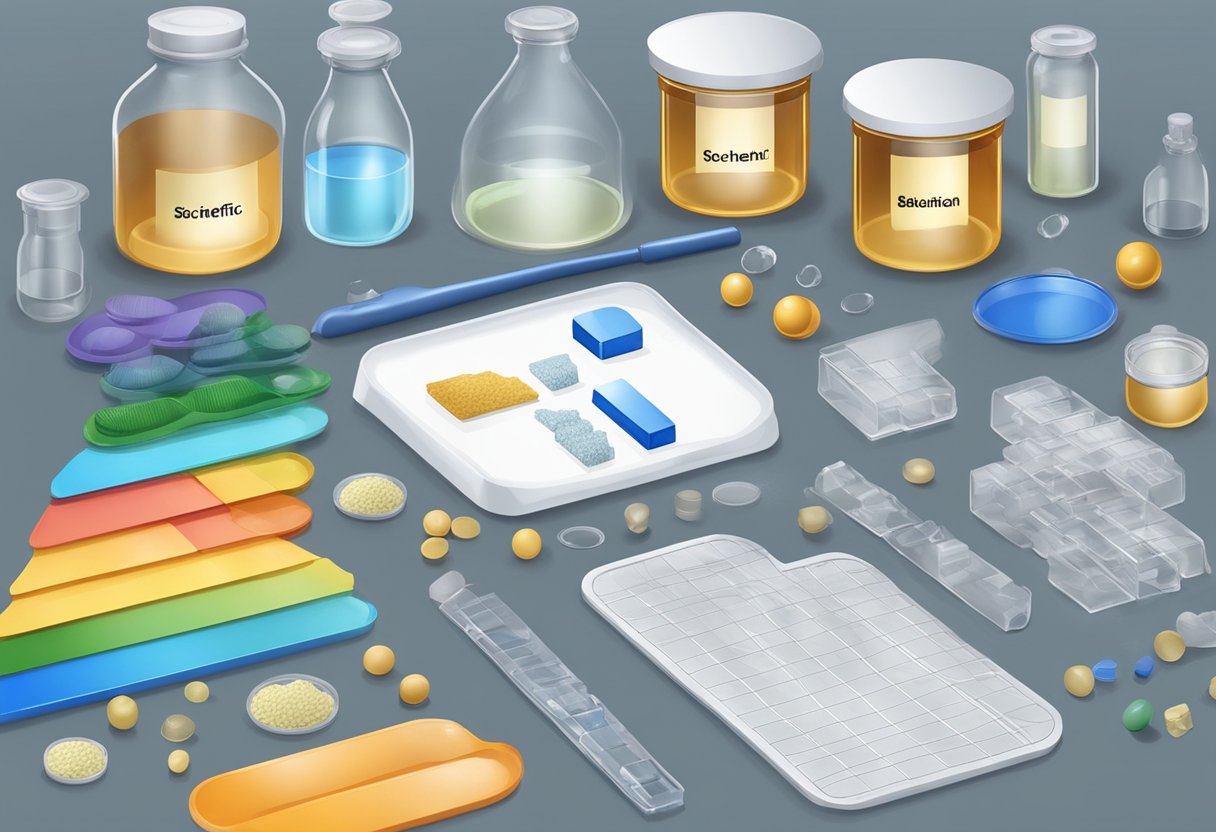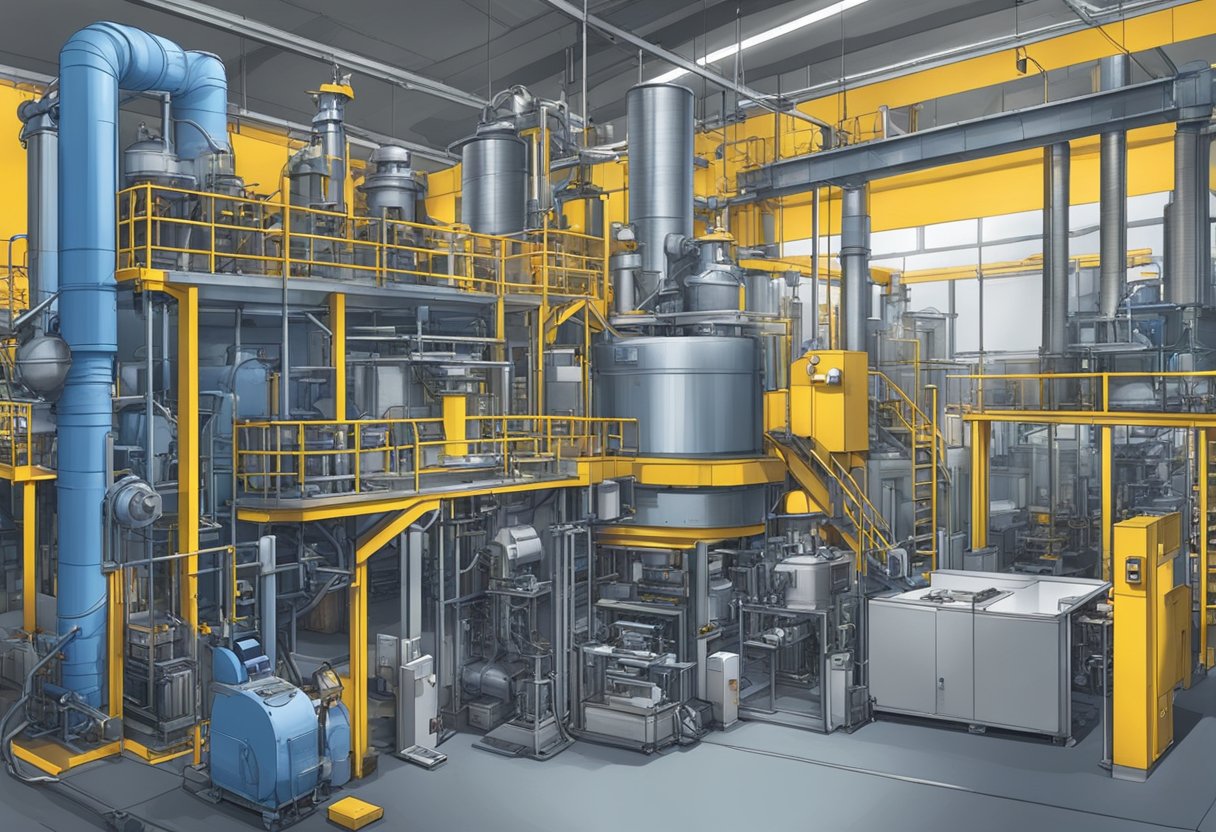Neodymium Butadiene Rubber: Properties and Applications
19/01/2024
Neodymium butadiene rubber, also known as NdBR, is a type of synthetic rubber that is widely used in various industries. NdBR is made by polymerizing butadiene with a neodymium-based catalyst, which results in a rubber with high levels of resilience, flexibility, and resistance to abrasion and tearing. This makes it an ideal material for use in a wide range of applications, from automotive parts to industrial machinery.

One of the key advantages of NdBR is its ability to maintain its physical properties over a wide range of temperatures. Unlike some other types of rubber, NdBR does not become brittle at low temperatures and does not soften or degrade at high temperatures. This makes it ideal for use in harsh environments where temperature fluctuations are common. NdBR is also highly resistant to chemicals, making it suitable for use in applications where exposure to harsh chemicals is expected.
NdBR is commonly used in the production of tires, conveyor belts, and other industrial products. Its high resilience and resistance to abrasion make it an ideal material for use in these applications. NdBR is also used in the production of seals, gaskets, and other products where flexibility and durability are important. Overall, NdBR is a versatile and reliable material that is widely used in many different industries.
Chemical Composition of Neodymium Butadiene Rubber

Neodymium Butadiene Rubber (NdBR) is a type of synthetic rubber that is commonly used in the production of tires, conveyor belts, and other industrial products. NdBR is a copolymer of butadiene and acrylonitrile, with neodymium as the catalyst.
The chemical composition of NdBR can vary depending on the specific application and manufacturing process. However, in general, it contains approximately 60-80% butadiene and 20-40% acrylonitrile. The neodymium catalyst is typically present in small amounts, ranging from 0.1-1% by weight.
The butadiene component of NdBR is responsible for its elasticity and resilience, while the acrylonitrile component provides resistance to chemicals and oils. The neodymium catalyst helps to control the polymerization reaction and improve the overall properties of the rubber.
NdBR is often compared to other types of synthetic pbat rubber, such as styrene-butadiene rubber (SBR) and nitrile rubber (NBR). While NdBR shares some similarities with these materials, its unique chemical composition and manufacturing process give it distinct properties and advantages in certain applications.
Overall, NdBR is a versatile and reliable material that has become an important component in many industrial products. Its chemical composition plays a crucial role in determining its properties and performance, making it an important area of study for researchers and manufacturers alike.
Properties and Characteristics

Physical Properties
Neodymium butadiene rubber (NdBR) is a synthetic elastomer that exhibits excellent mechanical properties. NdBR has a high level of elasticity, as well as good resistance to abrasion and tearing. It is also highly resistant to deformation and compression set, which makes it ideal for use in applications where repeated deformation is required.
In terms of its physical appearance, NdBR is typically a light tan color and has a relatively low specific gravity. It is also highly resistant to ozone and weathering, which makes it ideal for use in outdoor applications.
Chemical Resistance
NdBR exhibits excellent resistance to a wide range of chemicals, including oils, fuels, and solvents. It is also highly resistant to acids and bases, which makes it ideal for use in applications where exposure to harsh chemicals is likely.
Thermal Stability
NdBR has good thermal stability, with a maximum continuous use temperature of approximately 100°C. It also exhibits good resistance to heat aging, which makes it ideal for use in applications where exposure to high temperatures is likely.
Overall, NdBR is a versatile elastomer that exhibits excellent mechanical properties and chemical resistance. Its high level of elasticity, good resistance to abrasion and tearing, and excellent chemical resistance make it ideal for use in a wide range of applications, including automotive components, industrial products, and consumer goods.
Production Process

Polymerization Methods
Neodymium butadiene rubber (NdBR) is produced through a solution polymerization process, which involves the reaction of butadiene with neodymium catalysts in a solvent. The polymerization process can be carried out using either batch or continuous methods.
In the batch process, the butadiene and solvent are mixed together with the neodymium catalyst and other additives in a reactor vessel. The reaction is initiated by adding a free radical initiator, and the mixture is heated and stirred to promote polymerization. The resulting NdBR latex is then purified and concentrated to produce the final product.
In the continuous process, the butadiene and solvent are continuously fed into a reactor vessel along with the neodymium catalyst and other additives. The reaction is initiated by a continuous supply of free radical initiator, and the mixture is circulated through a series of reactors to promote polymerization. The resulting NdBR latex is then purified and concentrated to produce the final product.
Post-Polymerization Treatments
After the polymerization process, the NdBR latex is typically subjected to a number of post-polymerization treatments to improve its properties and performance. These treatments can include coagulation, washing, drying, and compounding.
Coagulation involves the addition of a coagulating agent to the NdBR latex to separate the rubber from the solvent. The resulting rubber cake is then washed to remove any residual solvent and other impurities.
The washed rubber cake is then dried to remove any remaining moisture before it is compounded with other materials to produce the final product. Compounding can involve the addition of fillers, plasticizers, antioxidants, and other additives to improve the properties of the NdBR.
Overall, the production process for neodymium butadiene rubber is a complex and highly controlled process that requires specialized equipment and expertise. However, the resulting material offers a range of unique properties and benefits that make it an important material for a variety of applications.
Applications
Automotive Industry
Neodymium butadiene rubber (NBR) is widely used in the automotive industry due to its excellent resistance to oil, fuel, and other automotive fluids. It is commonly used in seals, gaskets, and hoses for engines, transmissions, and other automotive systems. NBR is also used in the production of timing belts, O-rings, and other automotive components.
Electronics
NBR is also used in the electronics industry due to its excellent resistance to chemicals and oils. It is commonly used in the production of keyboard switches, printer rollers, and other electronic components. NBR is also used in the production of seals and gaskets for electronic devices.
Industrial Uses
NBR is widely used in various industrial applications due to its excellent resistance to oil, fuel, and other chemicals. It is commonly used in the production of hydraulic seals, gaskets, and hoses for industrial equipment. NBR is also used in the production of conveyor belts, industrial rollers, and other industrial components.
Overall, neodymium butadiene rubber is a versatile material that finds applications in various industries due to its excellent resistance to chemicals, oils, and other fluids.
Market Trends and Demand
Neodymium butadiene rubber (NdBR) is a synthetic elastomer that has gained popularity in recent years due to its unique properties. NdBR is known for its excellent abrasion resistance, high elasticity, and good low-temperature flexibility. These properties make it ideal for use in a wide range of applications, including automotive parts, industrial belts, and footwear.
The demand for NdBR is expected to grow steadily in the coming years, driven by the increasing demand for high-performance elastomers in various industries. The automotive industry is one of the major consumers of NdBR, with its use in tire treads and other automotive parts. As the demand for fuel-efficient vehicles increases, the demand for NdBR is expected to grow further, as it can help improve the fuel efficiency of vehicles by reducing rolling resistance.
Apart from the automotive industry, the demand for NdBR is also increasing in the industrial and construction sectors. NdBR is used in industrial belts, hoses, and other components that require high abrasion resistance and durability. In the construction industry, NdBR is used in roofing materials and waterproofing membranes.
The global NdBR market is highly competitive, with several key players operating in the market. Some of the major players in the market include Lanxess AG, Kumho Petrochemical Co., Ltd., and JSR Corporation. These companies are investing heavily in research and development to improve the properties of NdBR and develop new applications for it.
In conclusion, the demand for NdBR is expected to grow steadily in the coming years, driven by the increasing demand for high-performance elastomers in various industries. The automotive industry is expected to remain the largest consumer of NdBR, followed by the industrial and construction sectors.
Environmental Impact and Sustainability
Recycling and Disposal
Neodymium butadiene rubber (NBR) is not biodegradable and can persist in the environment for a long time. Therefore, proper disposal of NBR products is crucial to minimize their impact on the environment. NBR products should be disposed of in accordance with local regulations and guidelines.
Recycling of NBR products is possible but is not widely practiced due to the complexity of the process. NBR products can be ground into small pieces and used as filler material in other rubber products. However, the quality of the recycled material may be lower than that of the original product.
Regulatory Compliance
NBR products are subject to various regulations and guidelines related to their production, use, and disposal. These regulations aim to minimize the impact of NBR on the environment and ensure the safety of workers and consumers.
In the United States, NBR products are regulated by the Environmental Protection Agency (EPA) under the Toxic Substances Control Act (TSCA). The TSCA requires manufacturers to provide information on the chemical composition and potential hazards of NBR products.
In the European Union, NBR products are regulated by the Registration, Evaluation, Authorization, and Restriction of Chemicals (REACH) regulation. REACH requires manufacturers to register their products and provide information on their chemical composition and potential hazards.
Overall, NBR products can have a significant impact on the environment if not properly disposed of. However, regulatory compliance and proper disposal can help minimize this impact.
Quality and Standards
Certification Processes
Neodymium butadiene rubber (NdBR) is a highly specialized and engineered material that requires strict quality control measures. Manufacturers of NdBR must go through a rigorous certification process to ensure that their products meet the required standards. The certification process involves testing the rubber’s physical and chemical properties, including its tensile strength, elongation, hardness, and compression set.
In addition to these tests, manufacturers must also ensure that their production processes are consistent and meet the required standards. This includes ensuring that the raw materials used in the production of NdBR are of high quality and that the production process is free from contaminants.
International Standards
NdBR is used in a wide range of applications, including automotive, aerospace, and industrial applications. As a result, there are several international standards that govern the production and use of NdBR. These standards ensure that the rubber meets the required specifications and is safe to use in various applications.
One of the most widely recognized standards for NdBR is ISO 9001. This standard outlines the requirements for a quality management system and ensures that manufacturers of NdBR have a robust quality management system in place. Other standards that govern the production and use of NdBR include ASTM D2000 and SAE J200.
In conclusion, the certification processes and international standards for NdBR are critical in ensuring that the rubber meets the required specifications and is safe to use in various applications. Manufacturers of NdBR must adhere to these standards to ensure that their products meet the required quality standards and are safe to use in various applications.
Future Developments and Innovations
Neodymium butadiene rubber (NdBR) has been an important material for various industrial applications due to its excellent mechanical and chemical properties. As technology continues to advance, the future of NdBR looks promising with several developments and innovations in the pipeline.
One of the areas of focus for future developments is the improvement of NdBR’s thermal stability. Current research is exploring the use of novel additives and processing techniques to enhance the material’s resistance to heat. This would allow NdBR to be used in applications that require high-temperature resistance, such as in the automotive and aerospace industries.
Another area of innovation is the development of NdBR-based composites. By incorporating NdBR into other materials, such as plastics and metals, the resulting composites can have improved mechanical and chemical properties. This opens up new possibilities for NdBR in various fields, including construction, electronics, and medical devices.
Additionally, there is ongoing research into the use of NdBR in environmental applications. NdBR has been found to be effective in removing heavy metals from wastewater, making it a promising material for water treatment. It is also being studied for its potential use in soil remediation and air purification.
Overall, the future of NdBR looks bright with continued advancements in its properties and applications. As new technologies emerge, NdBR is sure to play an important role in shaping the future of various industries.
Challenges and Limitations
Despite the many advantages of neodymium butadiene rubber (NdBR), there are also some challenges and limitations associated with its use.
One of the main challenges is its high cost compared to other types of rubber. NdBR is more expensive to produce than natural rubber or synthetic rubbers such as styrene-butadiene rubber (SBR) or ethylene propylene diene monomer (EPDM). This can make it less attractive to manufacturers who are looking to reduce costs.
Another limitation is its limited availability. NdBR is not as widely available as other types of rubber, which can make it difficult to source in some regions. This can lead to supply chain issues and delays in production.
NdBR also has some limitations in terms of its physical properties. It has a lower tensile strength than some other rubbers, which can limit its use in certain applications. It is also more prone to heat buildup and degradation than some other rubbers, which can limit its use in high-temperature applications.
Despite these challenges and limitations, NdBR remains a valuable material for a variety of applications. Its high abrasion resistance, excellent tear strength, and good chemical resistance make it well-suited for use in tires, belts, and other industrial applications. As research and development continue, it is possible that some of these limitations may be overcome, making NdBR an even more attractive option for manufacturers.




